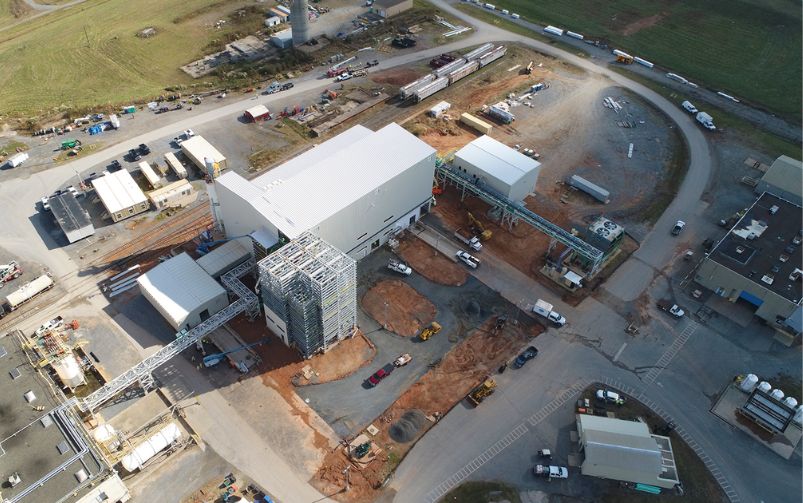Pan American Silver and Agnico Eagle Mines jointly acquired Yamana Gold in 2023, giving Agnico Eagle full ownership of the Canadian Malartic gold mine in Quebec’s Abitibi region. Courtesy of Agnico Eagle Mines/Canadian Malartic mine – by Mathieu Dupuis.
Consolidation, environment, social and governance (ESG)-driven transactions, Indigenous consultation, and resource nationalism were four key trends that Fred R. Pletcher, chair of the Mining Group and a partner in the Securities and Capital Markets Group at Borden Ladner Gervais LLP, noted have defined the global mining industry recently. Pletcher was the featured presenter at a July 12 webinar hosted by the CIM Management and Economics Society.
Consolidation
Pletcher stated that since the gold industry is the most fractured of all the metal commodities, gold consolidation has emerged as a strong trend in the past four years.
He referenced Barrick Gold’s no-premium deal with Randgold in 2019, which was followed by Newmont’s acquisition of Goldcorp in the same year, as deals that established both companies as major players in the gold sector.
Other significant deals in this arena identified by Pletcher included Newcrest’s acquisition of Pretium Resources—the Vancouver-based miner that operates the Brucejack mine in northwest B.C.—in 2021, the merger between Agnico Eagle Mines and Kirkland Lake Gold in 2022, and earlier this year, Newmont’s acquisition of Newcrest.
“The top 10 producers in the gold industry only generate 28 per cent of the production, which is very different than more concentrated commodities, like iron ore, nickel or zinc,” he said. “Gold was an area crying out for consolidation.”
Copper
Copper deals outpaced gold mergers and acquisitions (M&A) in 2022 for the first time in four years with US$14.24 billion in total value. Big copper deals Pletcher noted included Rio Tinto’s acquisition of Turquoise Hill Resources in 2022, BHP’s takeover of OZ Minerals, which was finalized in May and Glencore’s sale of its CSA copper mine in New South Wales, Australia, to Metals Acquisition Corp, which closed in June.
This year has seen its own copper rush, due to Glencore’s multiple unsolicited attempts to purchase Teck Resources and Hudbay Minerals’ acquisition of Copper Mountain Mining.
“That’s all been made easier by recent extremely strong copper prices, which has really given a lot of firepower to the copper players and allowed them to afford some of these acquisitions,” Pletcher said.
Due to U.S. President Joe Biden’s Inflation Reduction Act, which was passed in August 2022, American automakers have also increasingly entered transactions with lithium producers to secure supply. This includes Canadian miner Nemaska Lithium’s recent deal with Ford, announced in May, to supply lithium products over an 11-year period.
A seller-friendly market
Pletcher described the current mining industry as a seller’s market, but due to the large number of parties interested in purchasing, pressure is being put on sellers when it comes to due diligence and exclusivity.
Pletcher also mentioned the recent increase in syndicated acquisitions in the mining industry, noting the joint acquisition of Yamana Gold by Pan American Silver and Agnico Eagle Mines in March. He said syndicated acquisitions can be mutually beneficial for companies and help fund large transactions, but they also add closing risks and the risk of multiple negotiations.
Pletcher added that another impediment to transactions is M&A activism—or when shareholders use their ownership leverage to influence the structure of a transaction. He emphasized the importance of shareholder engagement in defending against M&A activism.
ESG-driven transactions
“In the last year, we’ve seen enormous ESG-driven transactions amongst some of the largest players in the industry,” Pletcher said.
He stated that the “poster child” for this trend is Teck Resources proposing to spin off its steelmaking coal business into a separate publicly traded company.
Pletcher added that companies may be forced into a transaction due to events that pose a threat to ESG principles.
“With the war between Russia and Ukraine, western companies [are forced to] exit Russia, and Kinross, unfortunately, had to sell its Russian assets at a deeply discounted price to [the Highland Gold Mining Group],” he explained. “Similarly, Tahoe Resources took a hit in [its] share price following a court-ordered shutdown at [its] Escobal mine in Guatemala to permit Indigenous consultation.” Pan American Silver seized the moment to buy Tahoe Resources shortly afterwards, completing the transaction in February 2019.
Indigenous consultation
The Tahoe Resources shutdown is a notorious example of the impact a failure to consult with local Indigenous communities could have on mining operations.
In 2021, Canada’s federal government incorporated the United Nations Declaration on the Rights of Indigenous Peoples (UNDRIP) into law to support Indigenous rights to self-determination, as did the B.C. government in 2019.
UNDRIP includes a principle that stipulates Indigenous groups are entitled to “free, prior and informed consent” (FPIC) when a government is contemplating actions that might affect them negatively.
“Early statements from the federal government have been that FPIC doesn’t mean veto; what it means is meaningful in-depth consultation,” Pletcher said. “Aboriginal consultation rates in Canada may change with the adoption of UNDRIP, but they’re only changing in one direction, in that they’ll be more robust.”
Increased mining nationalism
Countries are increasingly turning to state ownership for their natural resources. Pletcher stated that Mexico and Chile have been at the forefront of mining nationalism.
In April 2022, Mexico nationalized its lithium industry, despite having no producing mines. On May 8 of this year, Mexico also approved several mining reforms, including reserving most new mineral exploration activities to the Mexican state and requiring all new mining concessions to be granted pursuant to a public tendering process.
“So even if you held the exploration concessions, you may not be the company that ends up developing and operating those concessions,” Pletcher explained.
The reforms also introduced Indigenous consultation requirements, as well as environmental safeguards. Chile, the second-largest producer of lithium in the world, nationalized its lithium industry on April 20 of this year.
“The pendulum is swinging towards mining nationalism, away from mining investments,” added Pletcher. “Companies should be cautious when they’re operating outside of tier one established mining jurisdictions with a rule of law, and maybe even when they’re within those jurisdictions.”




